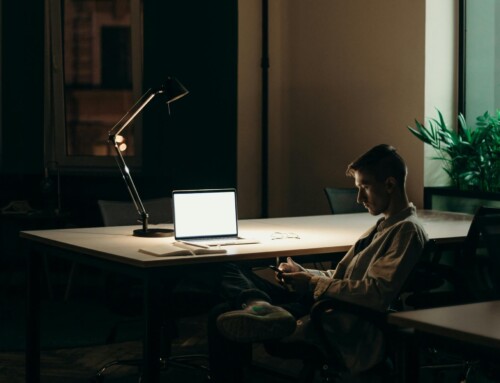Prior to the enforced work-from-home (WFH) saga that began in 2020, most of us considered it a privilege to be excused from attending the office. As life repeatedly proves, the grass is indeed greener on the other side. The world has now discovered that discrete home and workspaces are conducive for both home and work life.
So, what is the solution if you are still required to work from home? Simple – recreate the physical boundaries on a smaller scale and extend that approach to your state of mind.
The Physical Workspace
Physical boundaries possess an inherent psychological element. A barrier between your workspace and the rest of your home acts as a powerful on-off switch that tells your brain when to get into and out of work mode. A separate room would, of course, be ideal but something as simple as a low shelf or a curtain can work, too. At the very least, stow away your work gear out of sight after office hours.
Separate areas are especially effective when the feeling and décor inside and outside the work area are distinctly unlike each other. If possible, create a home workspace that emulates your workplace.
There are three basic elements to employ.
- Furniture. Don’t simply pull up a dining chair to work; instead, use a purpose-made office chair. Ask your employer if they will pay for it, or at least subsidize the cost. Some companies have even allowed WFH employees to take their work chairs home from the office.
- Layout. Work desks are trickier since most people don’t have space at home for an additional table. It’s also unlikely your employer will approve of you taking your entire office station home. The alternative is to recreate your workspace with the same table-top layout for computer screen, folders, stationery, and—critically—coffee mug.
- Lighting. Warm yellow light imbues a space with a relaxing ambiance while cooler white lights are generally more “formal” (and likely installed at your office). Opt for a cooler light in your WFH space to get in the right frame of mind.
Note that while the focus of these measures is on creating a conducive work environment inside a home, the real benefit lies in how they establish the work atmosphere in a designated area, preventing it from permeating through the entire home.
Work Brain – Home Brain
Your environment can only go so far. The most important aspect of work-life balance is your personal attitude. Personal discipline is especially important. Many of us end up working outside office hours, not because we are workaholics but because we didn’t perform at our best inside of those hours. A strong work ethic pushes you to work when you have to and frees you to unwind afterward.
On that foundation, nurture a series of habits that reinforce the work-home divide:
- Switch off the work computer when the workday is over.
- Remove your work email from your phone, or turn off notifications after hours.
- Do the same with collaboration apps such as Slack.
Most managers and colleagues will accept your unavailability after office hours if your work is stellar when you are supposed to be at your desk. Perhaps your attitude just might push them to create a better work-life balance for themselves.
Find more Work-Life Balance articles on my website to learn more about the steps you can take to reclaim your work-life balance.






